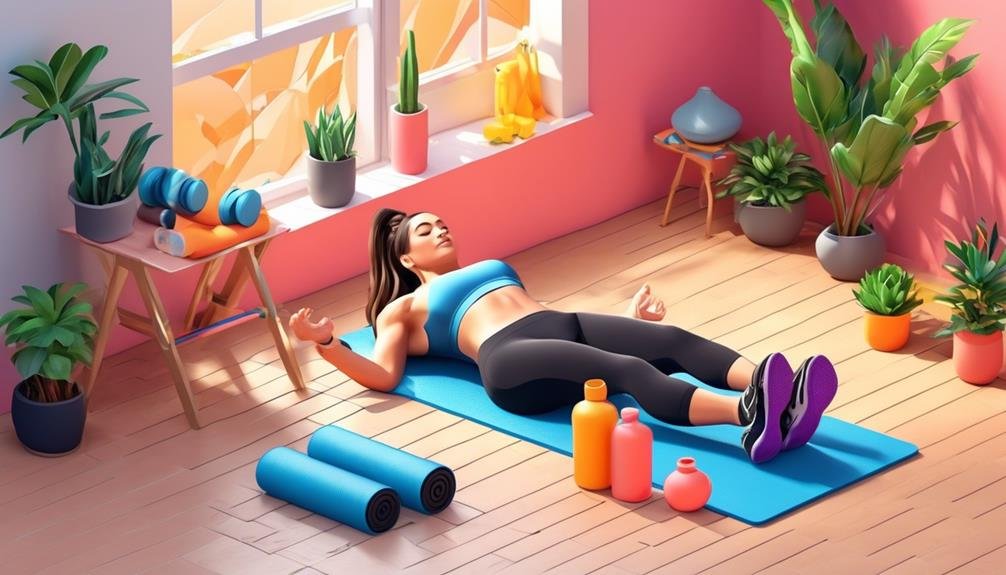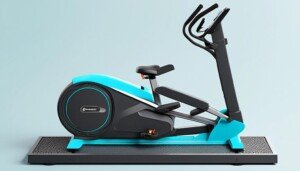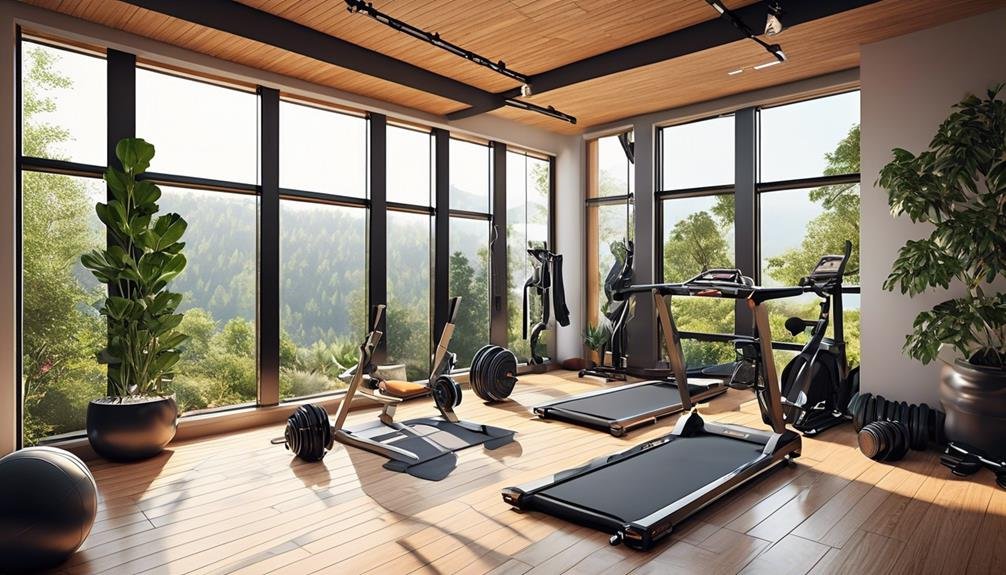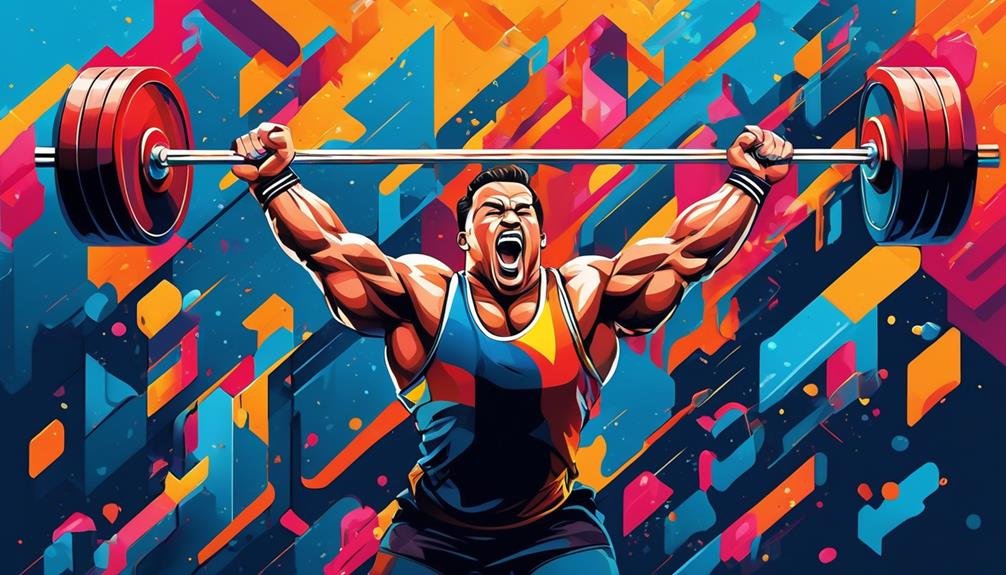Are you tired of feeling sore and achy after your home gym workouts? Well, fear not, because there's a mobility aid that can help you recover like a pro.
Foam rollers, those seemingly harmless cylinders of foam, are actually powerful tools that can assist in your home gym recovery.
But what exactly do they help with? Stay tuned to uncover the benefits of using foam rollers for:
- Muscle soreness relief
- Improving flexibility and mobility
- Injury prevention and rehabilitation
- Targeting specific muscle groups
Plus, we'll provide tips for incorporating foam rollers into your home gym recovery routine. Don't miss out on this essential information for maximizing your post-workout recovery!
Key Takeaways
- Foam rollers are versatile massage tools that aid in muscle recovery, mobility improvement, and post-workout rehabilitation.
- They help reduce muscle tension, promote faster recovery, and break up soft tissue adhesions and scar tissue.
- Foam rollers increase blood flow, bringing oxygen and nutrients to the tissues, and improve flexibility, range of motion, and joint mobility.
- They are effective in preventing injuries, targeting specific muscle groups, and promoting overall muscle health.
Benefits of Using Foam Rollers for Home Gym Recovery
Using foam rollers for home gym recovery provides numerous benefits for muscle recovery, mobility improvement, and overall post-workout rehabilitation.
Foam rollers are versatile massage tools that can help reduce muscle tension, increase blood flow, and improve range of motion. When you use a foam roller on your muscles, the pressure applied helps break up soft tissue adhesions and scar tissue, which can contribute to muscle soreness and limited mobility. By using foam rollers regularly, you can relieve muscle tension and promote faster recovery.
Foam rollers work by applying pressure to specific areas of your body, targeting tight muscles and knots. This pressure helps increase blood flow to the muscles, which brings oxygen and nutrients to the tissues, aiding in the repair process. Additionally, foam rolling can help improve flexibility and range of motion by loosening up tight muscles and increasing joint mobility.
Whether you're using a foam roller before a workout to warm up your muscles or after a workout to aid in recovery, incorporating foam rollers into your home gym routine can have significant benefits. By including foam rolling in your post-workout routine, you can reduce muscle soreness, improve muscle recovery, and enhance overall mobility and flexibility.
How Foam Rollers Aid in Muscle Soreness Relief
Foam rollers play a crucial role in relieving muscle soreness and aiding in post-workout recovery. When used as mobility aids, foam rollers can effectively reduce tension in the muscles and provide relief from soreness. These recovery tools work by applying pressure to the muscles, which helps to break up adhesions and reduce trigger points. By massaging the muscles, foam rolling promotes blood flow, which aids in muscle recovery and decreases swelling.
Foam rollers are particularly beneficial for home gym recovery because they can be used in the comfort of your own space. They're versatile and can be incorporated into various exercises and stretching routines. Using a foam roller before a workout can help warm up the muscles and prepare them for the physical demands of exercise. This not only reduces the risk of injury but also enhances performance.
In addition to reducing muscle soreness, foam rollers improve mobility and flexibility. They can be used as part of physical therapy exercises to enhance range of motion and alleviate pain associated with tight muscles. Foam rolling also helps to ease stiffness in the muscles, making it an effective tool for recovery after intense workouts.
Foam Rollers for Improving Flexibility and Mobility
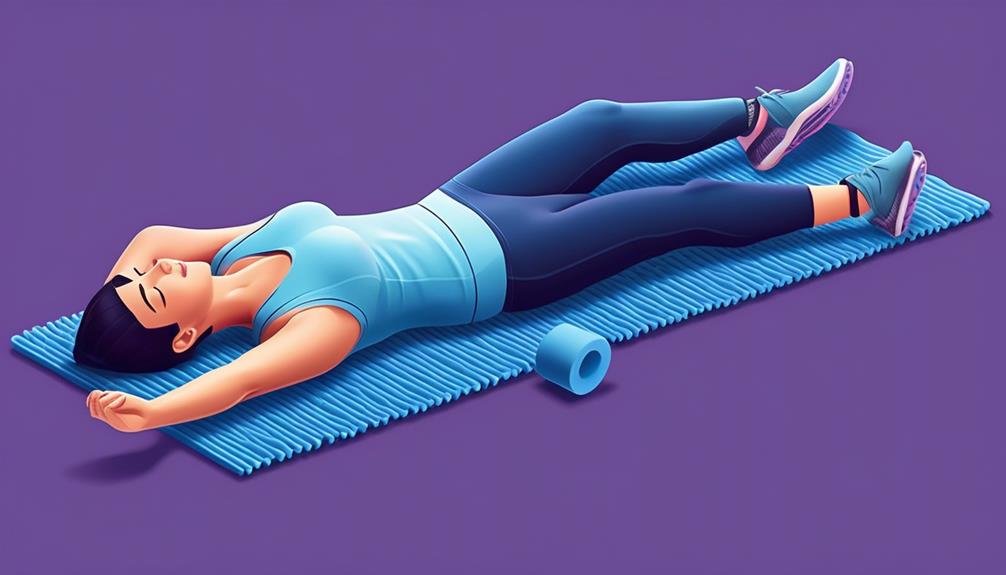
To further enhance your recovery and improve your overall flexibility and mobility, incorporating foam rollers into your home gym routine can provide significant benefits. Foam rollers are versatile tools that can target different muscle groups and help relieve muscle tension. They're considered one of the best recovery tools for workout recovery.
Foam rollers work by applying pressure to specific areas of the body, using your own body weight. This pressure helps to release tension and increase blood flow to the muscles, promoting faster recovery. The textured surface of the foam roller allows for a deep tissue massage, targeting sensitive areas and small muscles that are often overlooked.
A foam roller can be used to stretch and elongate muscles, improving flexibility and range of motion. By rolling over different muscle groups, you can break up scar tissue and adhesions, reducing stiffness and increasing mobility. Foam rolling before a workout can also help warm up the muscles and prevent injuries.
For those who want a more targeted approach, a massage ball can be used in conjunction with a foam roller. The massage ball can be used to target specific trigger points or hard-to-reach areas.
Foam Rollers for Injury Prevention and Rehabilitation
For effective injury prevention and rehabilitation, incorporating foam rollers into your recovery routine can provide significant benefits. Foam rolling is a form of self-myofascial release that helps reduce the risk of injury by targeting soft tissue and increasing blood flow to the muscles. By using a foam roller, you can effectively break down adhesions and scar tissue, promoting muscle recovery and decreasing swelling.
Foam rollers are versatile tools that can be used for various purposes in injury prevention and rehabilitation. They can be used in physical therapy to aid in the rehabilitation process, as well as for core strength and stability exercises. Foam rolling can also help with postural alignment and balance exercises, improving overall athletic performance.
Using a foam roller before a workout can help warm up the muscles and increase flexibility, reducing the risk of injury during exercise. By targeting specific areas of the body with a foam roller, you can release muscle tension and improve mobility, allowing for better range of motion.
In addition to foam rollers, other tools come in handy for injury prevention and rehabilitation. Massage guns and compression boots are also effective in promoting muscle recovery and reducing the risk of injury. Incorporating these tools into your recovery routine can greatly enhance your overall athletic performance and help you achieve your fitness goals.
Targeting Specific Muscle Groups With Foam Rollers
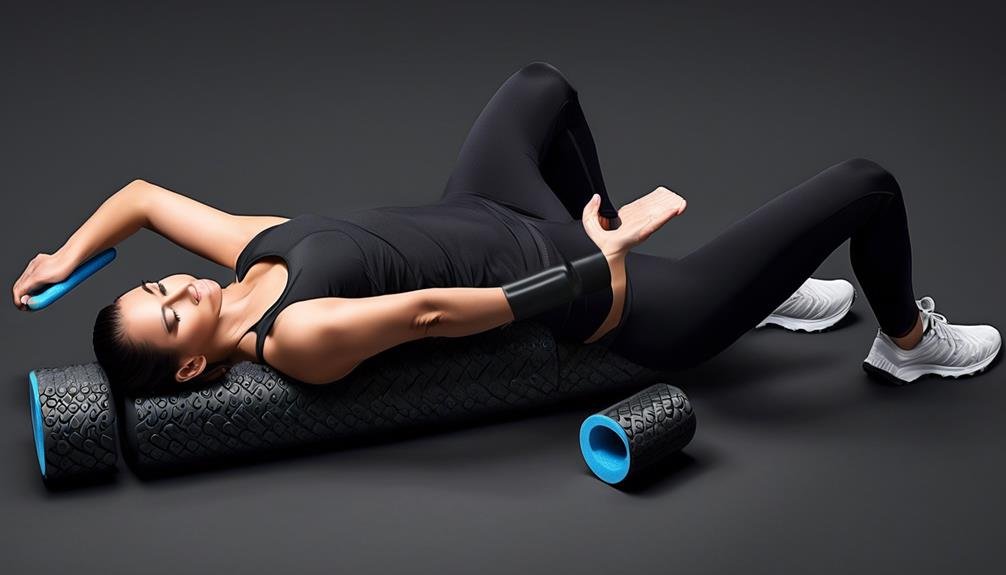
When targeting specific muscle groups for post-workout rehabilitation, incorporating foam rollers into your recovery routine can be highly beneficial. Foam rollers are versatile tools that can help reduce the risk of injury, improve mobility, and promote muscle recovery.
Here are three reasons why targeting specific muscle groups with foam rollers is advantageous:
- Target different muscle groups: Foam rollers come in various sizes and shapes, allowing you to target specific muscle groups with precision. Whether you're focusing on your quads, hamstrings, calves, or back, there's a foam roller that can effectively address your needs.
- Versatility and ease of use: Foam rollers may look simple, but they're incredibly effective in promoting muscle recovery. Using a foam roller requires minimal instruction and can easily be incorporated into your post-workout routine. With just a little guidance, you can effectively target and treat specific muscle groups to alleviate tension and promote faster recovery.
- Helps muscles and tendons stay happy: Foam rolling helps to break up adhesions and scar tissue in muscles and tendons, promoting improved blood circulation and nutrient delivery. By using a foam roller on specific muscle groups, you can reduce muscle soreness, prevent muscle imbalances, and improve overall muscle health.
Incorporating foam rollers into your recovery routine can help you target specific muscle groups, reduce the risk of injury, and promote faster muscle recovery. So, grab a foam roller, use both hands for stability, and experience the benefits it offers. Don't let its seemingly slippery surface fool you; its size makes it a powerful tool for keeping your muscles happy and healthy.
Tips for Incorporating Foam Rollers Into Your Home Gym Recovery Routine
Incorporating foam rollers into your home gym recovery routine can greatly enhance your muscle recovery and promote overall physical well-being. Foam rolling is a simple yet effective technique that targets specific muscle groups, helps break down soft tissue adhesions, and soothes tight fascia. To ensure you maximize the benefits of using foam rollers, here are some tips to consider:
- Start with a warm-up: Before using the foam roller, warm up your muscles with light cardio exercises to increase blood flow and prepare your body for the rolling session.
- Target various muscles: Foam rollers can be used on different muscle groups. Refer to the table below for some examples:
| Muscle Group | Foam Rolling Technique |
|---|---|
| Quadriceps | Place foam roller beneath upper thighs |
| Hamstrings | Roll back and forth along the back of your thighs |
| Calves | Position foam roller under your calves and roll up and down |
| Upper Back | Lie on your back with foam roller under your upper back and roll up and down |
- Gradually increase pressure: Start with gentle pressure and gradually increase as your muscles become more accustomed to the foam roller. Avoid excessive pressure, especially on sensitive areas or injured muscles.
- Consistency is key: Incorporate foam rolling into your regular recovery routine. Aim for at least 10-15 minutes per session, a few times a week, to maintain the benefits and improve muscle recovery over time.
Frequently Asked Questions
What Equipment Is Used in Gym Recovery?
Foam rollers, massage sticks, compression boots, and hot/cold therapy tools are some equipment used in gym recovery. They help reduce muscle tension, soreness, and fatigue, improve mobility, flexibility, and circulation for effective post-workout recovery.
What Does Rolling Do for Your Muscles?
Rolling your muscles with a foam roller helps reduce tension and stiffness, improving flexibility and mobility. It aids in post-workout recovery by promoting muscle healing and reducing swelling. Plus, it's a great warm-up tool before exercise.
What Are the Recovery Items for Fitness?
Recovery items for fitness include Theragun Elite, The Wave Tool, Trigger Point Performance Grid Foam Roller, Therabody RecoveryTherm Cube, and Hyperice Normatec 3 Compression Boots. These aids help reduce stiffness, improve flexibility, target achy muscles, and increase circulation.
What Is the Best Muscle Recovery Supplement?
The best muscle recovery supplement is subjective and depends on individual needs and goals. Consult with a healthcare professional or nutritionist to determine the most suitable supplement for your specific requirements.
Conclusion
In conclusion, foam rollers are highly effective mobility aids for home gym recovery. They offer a multitude of benefits, including muscle soreness relief, improved flexibility and mobility, injury prevention and rehabilitation, and targeted muscle group therapy.
By incorporating foam rollers into your recovery routine, you can enhance athletic progress, increase range of motion, break down scar tissue, and promote muscle repair through increased blood flow and circulation.
Consider investing in a high-quality foam roller to optimize your home gym recovery.


